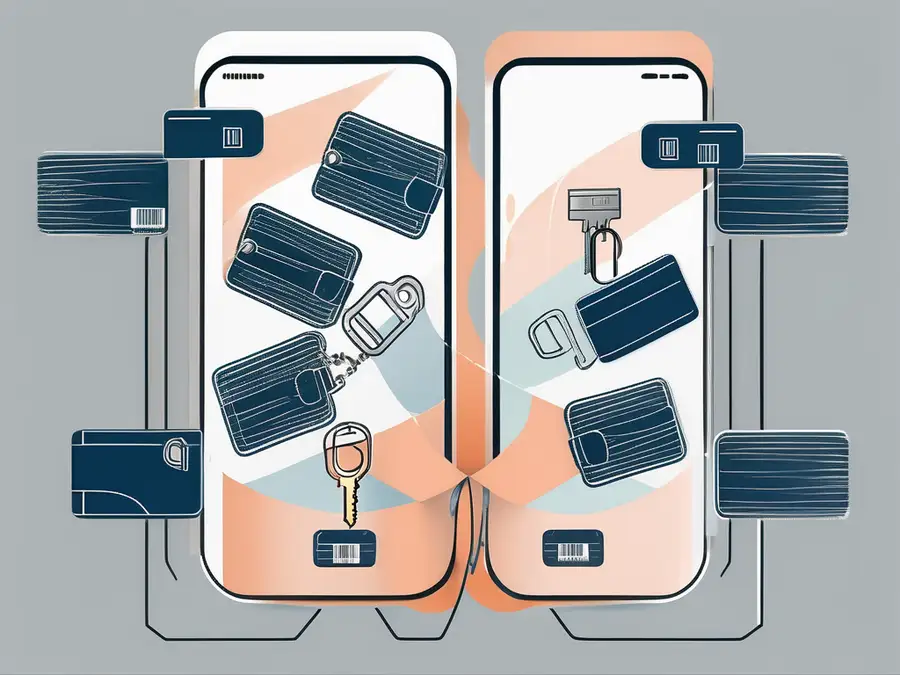Multi Signature Wallets Beginner’s Guide

If you're looking to enhance the security and control of your cryptocurrency transactions, then multi signature wallets are the solution for you. In this comprehensive guide, we'll cover everything you need to know about multi signature wallets, from understanding the basics to setting up and managing your own wallet.
Understanding the Basics of Multi Signature Wallets
What is a Multi Signature Wallet?
A multi signature wallet, also known as a multisig wallet, is a type of cryptocurrency wallet that requires multiple signatures or approvals before a transaction can be executed. Instead of one individual having complete control over the funds, the wallet utilizes a combination of private keys held by different signatories.
Multi signature wallets are particularly popular in corporate settings, where financial transactions require oversight and approval from multiple stakeholders. This added layer of security helps prevent unauthorized transactions and reduces the risk of internal fraud.
How Does a Multi Signature Wallet Work?
When a transaction is initiated from a multi signature wallet, it must be approved by a predetermined number of signatories. For example, if a wallet is configured for 2-of-3 multisig, at least two signatories need to approve the transaction. This distributed control ensures that no single person can unilaterally execute transactions.
Each signatory possesses a unique private key, and these keys are combined to create a multisig address. This address is used for receiving funds and initiating transactions.
Furthermore, multi signature wallets can be set up with various configurations, such as 2-of-2, 2-of-3, or even more complex setups like 3-of-5. The flexibility in setting the required number of signatures provides customization options based on the security needs of the users.
The Advantages of Using Multi Signature Wallets
Enhanced Security Measures
One of the biggest advantages of multi signature wallets is the enhanced security they provide. With traditional single signature wallets, if a private key is compromised or lost, the entire wallet becomes vulnerable. In contrast, multi signature wallets require a collusion of multiple private keys for a transaction to occur, significantly reducing the risk of theft or unauthorized access.
As an expert in the field, I always recommend multi signature wallets to individuals and businesses seeking additional protection for their digital assets.
Personal advice: In fact, I experienced a breach in my single signature wallet a few years ago, which led me to explore the benefits of multi signature wallets. I haven't looked back since, and the peace of mind that comes with knowing my funds are secure is invaluable.
Moreover, multi signature wallets also offer the advantage of added redundancy. In the event that one of the signatories loses their private key or is unavailable, the wallet can still be accessed and transactions can proceed smoothly with the remaining authorized parties. This redundancy feature ensures that your funds remain accessible even in unforeseen circumstances.
Increased Control Over Transactions
Another major advantage of multi signature wallets is the increased control they offer. With multiple signatories required for a transaction, you have the power to set up hierarchical authorization levels, ensuring that critical decisions are made collectively. This feature is particularly useful for businesses or joint accounts.
Furthermore, the increased control over transactions provided by multi signature wallets extends to the prevention of unauthorized or fraudulent activities. Each transaction requires the approval of multiple parties, reducing the risk of one individual making unauthorized transfers or engaging in malicious activities. This added layer of control can provide peace of mind and assurance when managing digital assets.
Setting Up Your Multi Signature Wallet
Choosing the Right Multi Signature Wallet
When it comes to choosing a multi signature wallet, there are several important factors to take into consideration to ensure you select the best option for your needs. Compatibility with your preferred cryptocurrencies is key, so make sure the wallet supports the digital assets you plan to store. Additionally, consider the ease of use of the wallet interface and the security features it offers. Popular choices in the multi signature wallet space include reputable hardware wallets such as Trezor and Ledger, known for their robust security measures, as well as software wallets like Electrum and BitGo, which provide user-friendly experiences.
Moreover, it's essential to look into the customer support provided by the wallet provider, as having access to reliable assistance can be invaluable in case of any issues or questions that may arise during the setup or use of the wallet. Some wallets offer extensive guides and tutorials to help users navigate the multi signature setup process smoothly, so be sure to explore these resources to make the most of your wallet.
Step-by-Step Guide to Wallet Setup
Setting up a multi signature wallet may sound complex, but with the right guidance, it can be a straightforward process. To help you embark on this journey, here's a comprehensive step-by-step guide to setting up your multi signature wallet:
- Begin by conducting thorough research to identify a reputable and secure multi signature wallet that aligns with your specific requirements and preferences.
- Once you've selected your preferred wallet, proceed to install the necessary software on your device or opt for a hardware wallet if you prioritize physical security.
- Generate the required number of private keys or hierarchies as per the wallet's specifications, ensuring that each key is securely stored and accessible only to authorized individuals.
- Determine the desired number of signatories for your multi signature wallet and establish the authorization rules that govern transaction approvals.
- With all preparations in place, create the multisig address that will serve as the focal point for your wallet's operations, and securely store the private keys in separate, safe locations to prevent unauthorized access.
Managing Your Multi Signature Wallet
Adding and Removing Signatories
As your needs and circumstances change, you may need to add or remove signatories from your multi signature wallet. This process typically involves updating the authorization rules and generating new private keys for the new or departing signatory. When adding a new signatory, it is crucial to ensure that the individual understands their responsibilities and the security measures in place to protect the wallet's assets.
Personal advice: I recently had to add another signatory to my wallet to ensure smoother collaboration with my business partners. The ability to adapt the access and control settings of the wallet has been instrumental in streamlining our operations. It's important to regularly review and update the list of signatories to reflect any changes within your organization or partnership structure.
When removing a signatory from your multi signature wallet, it is essential to follow proper procedures to safeguard the wallet's security. This may involve redistributing the signing authority among the remaining signatories and reconfiguring the multi signature setup to reflect the change.
Making Transactions with Your Wallet
Using a multi signature wallet for transactions is similar to the process in a regular wallet. However, instead of a single signatory signing off on the transaction, the predetermined number of signatories must collectively approve it. The process typically involves signing the transaction with the required private keys. This added layer of security ensures that no single individual can authorize transactions independently, reducing the risk of unauthorized or fraudulent activity.
Before initiating a transaction with your multi signature wallet, it is important to confirm that the required number of signatories are available to approve the transaction. This collaborative approach to transaction authorization promotes transparency and accountability within the organization or group using the wallet.
Troubleshooting Common Multi Signature Wallet Issues
Recovering Lost Signatures
If a signatory's private key is lost or compromised, it's crucial to take immediate action to secure the wallet. Depending on the wallet software being used, there may be options to recover lost signatures through backup procedures or key regeneration processes. It's important to follow the wallet provider's instructions carefully to ensure a successful recovery.
Resolving Transaction Conflicts
Occasionally, conflicts or disputes may arise during the transaction approval process. In such cases, it's important to have clear guidelines and communication channels in place to resolve the conflicts and reach a consensus amongst the signatories. Transparency and trust are key to maintaining the integrity of the multi signature wallet.
Now armed with this ultimate guide to multi signature wallets, you can confidently take control of your cryptocurrency transactions while maximizing security and convenience. Remember, always prioritize the safety of your funds by choosing a reliable wallet and implementing proper security practices.
Ready to take your trading to the next level after mastering the security of multi signature wallets? Look no further than Morpher, the innovative trading platform that combines the benefits of blockchain technology with a seamless, fee-free trading experience. With Morpher, not only can you trade a variety of asset classes with zero fees and infinite liquidity, but you also get the safety and control of a non-custodial wallet. Start with as little as $1, enjoy up to 10x leverage, and explore unique markets like Virtual Futures. Sign Up and Get Your Free Sign Up Bonus today to transform the way you invest with Morpher.

Disclaimer: All investments involve risk, and the past performance of a security, industry, sector, market, financial product, trading strategy, or individual’s trading does not guarantee future results or returns. Investors are fully responsible for any investment decisions they make. Such decisions should be based solely on an evaluation of their financial circumstances, investment objectives, risk tolerance, and liquidity needs. This post does not constitute investment advice.

Painless trading for everyone
Hundreds of markets all in one place - Apple, Bitcoin, Gold, Watches, NFTs, Sneakers and so much more.

Painless trading for everyone
Hundreds of markets all in one place - Apple, Bitcoin, Gold, Watches, NFTs, Sneakers and so much more.









